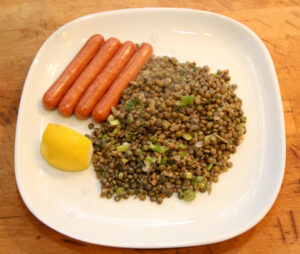How to Cook Imitation Crab Meat with Butter

Cooking is an adventure that often leads to delightful surprises, and learning how to cook imitation crab meat with butter is one of those unexpected culinary joys. I first stumbled upon this method on a rainy afternoon when I was searching for a quick yet satisfying dish to brighten up my day. I had a bag of imitation crab meat in my freezer and a generous block of butter in my fridge, and a simple idea formed: why not combine the two for a dish that’s both rich in flavor and incredibly easy to prepare? This blog is a detailed journey into how to cook imitation crab meat with butter, peppered with personal insights, practical tips, and a few cultural nods that bring the recipe to life.
The Appeal of Imitation Crab Meat
Imitation crab meat, also known as surimi, has long been a favorite among seafood lovers and those who enjoy a budget-friendly alternative to real crab. Its subtle taste and versatile texture allow it to absorb flavors beautifully. Growing up near the coast, I remember my family gatherings where seafood was the highlight of every meal. Although I never had the chance to savor authentic crab on a regular basis, imitation crab meat became a comforting substitute, and now, paired with butter, it creates a decadently rich dish that evokes nostalgic memories and contemporary simplicity.
Why Butter?
Butter is more than just a cooking fat; it’s a flavor enhancer that transforms dishes with its creamy, indulgent texture. When you combine butter with imitation crab meat, you unlock a harmonious blend of flavors where the slight sweetness and delicate seafood flavor of the crab are accentuated by the rich, velvety notes of butter. Whether you’re a seasoned cook or just beginning your culinary journey, knowing how to cook imitation crab meat with butter is a game-changer that can elevate even the simplest meals.
Essential Ingredients and Tools
Before we dive into the step-by-step process, let’s go over the basic ingredients and tools you’ll need. Keeping it simple is key, but a few extras can add layers of flavor:
- Imitation Crab Meat: Look for high-quality surimi in the seafood section. It’s usually available pre-cooked, which means you’re just heating it and adding flavors.
- Butter: Unsalted butter is preferred so that you can control the saltiness in your dish.
- Lemon Juice: A splash of lemon juice brightens the flavor and cuts through the richness of the butter.
- Fresh Herbs: Parsley or dill can add a fresh contrast to the savory butter and crab.
- Seasonings: Salt and pepper are essential. You might also consider a pinch of paprika or garlic powder if you want an extra kick.
- Optional Add-ins: A minced garlic clove or a handful of chopped scallions can introduce additional layers of taste.
As for the tools, a good-quality non-stick skillet is ideal, along with a spatula, measuring spoons, and a citrus juicer if you’re using fresh lemon.
Step-by-Step Guide: How to Cook Imitation Crab Meat with Butter
Now that we have everything in place, let’s explore the process step by step. This method is both straightforward and forgiving, making it perfect for a quick dinner or a light snack.
1. Preparing the Ingredients
Begin by taking your imitation crab meat out of the package and letting it come to room temperature. This simple step ensures that the meat heats evenly when it hits the skillet. While it warms slightly, you can prepare the other ingredients. Cut a few small pieces of butter—about 2 to 3 tablespoons should do for a standard-sized package of crab meat. If you’re in the mood for a subtle garlic flavor, mince a small garlic clove finely.
I often take a moment here to appreciate the aroma of butter melting slowly in my kitchen—a scent that always brings back memories of my grandmother’s cooking, where every meal was prepared with a touch of love and tradition.
2. Melting the Butter
Heat your non-stick skillet over medium-low heat. Once the pan is warm, add the butter. Let it melt slowly, swirling the pan gently so that the butter evenly coats the bottom. If you choose to include garlic, add it at this stage. The key is to let the garlic infuse its flavor into the butter without burning, which means keeping the heat on the lower side.
During this process, you might notice the butter beginning to bubble and foam slightly. This is a sign that it’s ready for the next step. The goal is to create a smooth, aromatic base for the imitation crab meat.
3. Adding the Imitation Crab Meat
Once your butter is melted and fragrant, it’s time to add the imitation crab meat. Gently place the pieces into the skillet, taking care not to overcrowd the pan. Overcrowding can cause the meat to steam rather than sauté, which might dilute the flavors you’re working so hard to build.
The crab meat is already cooked, so your aim here is simply to warm it up and allow it to absorb the buttery goodness. Gently toss the crab meat in the melted butter, ensuring that each piece gets a light coating. The sound of sizzling is a comforting reminder that you’re on the right track.
4. Cooking and Flavor Infusion
Allow the crab meat to warm in the butter for about 3 to 4 minutes, stirring occasionally. During this time, the butter will continue to work its magic, absorbing any additional flavors from the garlic and any seasonings you might have added. This step is crucial because it not only warms the meat but also enriches its flavor, making it more savory and well-rounded.
If you’re feeling adventurous, this is the perfect time to sprinkle a bit of paprika or a dash of garlic powder. The spices will meld with the butter and create a subtle, layered flavor that’s both comforting and complex.
5. Adding a Splash of Lemon Juice
After the crab meat has been sufficiently heated and infused with buttery goodness, take the skillet off the heat. Squeeze a bit of fresh lemon juice over the dish. The acidity from the lemon is the perfect counterbalance to the richness of the butter. It brightens the dish and ensures that every bite has a refreshing lift. I always like to add just a splash—enough to cut through the richness without overpowering the delicate flavors of the crab.
6. Finishing Touches
The final step is to garnish your dish with fresh herbs. I usually opt for chopped parsley or dill, as these herbs add a burst of color and a hint of freshness that ties the whole dish together. A light dusting of salt and pepper at this stage is also important; it ensures that the flavors are balanced and that the dish has just the right amount of seasoning.
Bringing It All Together: Serving Suggestions and Variations
Learning how to cook imitation crab meat with butter is not only about following a recipe—it’s about making the dish your own. One of the joys of cooking is that you can always experiment with variations and serving suggestions. Here are a few ideas to inspire you:
A. As an Appetizer
Serve your buttery imitation crab meat on top of crisp crostini or alongside thin slices of toasted baguette. This makes for an elegant appetizer that’s perfect for parties or a sophisticated snack. I often pair this dish with a chilled glass of white wine, which complements the buttery richness perfectly.
B. Over a Fresh Salad
For a light, refreshing meal, try serving the crab meat over a bed of mixed greens. Toss in some cherry tomatoes, cucumber slices, and perhaps a few radishes for crunch. The salad acts as a crisp, refreshing counterpoint to the warm, velvety crab meat, creating a harmonious balance of flavors and textures.
C. In a Pasta Dish
Another fantastic variation is to toss the imitation crab meat with butter into a bowl of freshly cooked pasta. Add a splash of cream, a bit of lemon zest, and some chopped basil to create a quick yet luxurious pasta dish. This version is a nod to classic Italian recipes, where simple ingredients are elevated through technique and timing.
D. In a Rice Bowl
A hearty rice bowl can also be a great canvas for this dish. Serve the imitation crab meat with butter over a bowl of steamed rice, and add some steamed or stir-fried vegetables. Drizzle any remaining buttery sauce on top, and finish with a sprinkle of green onions or cilantro. This variation is not only filling but also offers a wonderful mix of textures and flavors that make every bite interesting.
The Cultural and Culinary Context
Imitation crab meat has an interesting history that mirrors the evolution of global cuisine. Originally developed as an economical alternative to real crab, it quickly became popular in various parts of the world. In Japan, for example, it’s a key ingredient in sushi rolls like California rolls. In the United States, its versatility has made it a common ingredient in seafood salads and casseroles. By learning how to cook imitation crab meat with butter, you’re not just preparing a meal; you’re participating in a culinary tradition that spans continents and cultures.
I recall a time during a family reunion when a cousin, who had spent years living abroad, brought a dish made with imitation crab meat that he had perfected over time. The way he combined it with a rich butter sauce and fresh herbs was both innovative and reminiscent of the coastal flavors he had grown up with. That meal sparked many lively discussions about the evolution of food and how traditional recipes can be reimagined using modern techniques.
Personal Reflections on the Cooking Process
There’s something incredibly satisfying about making a dish that feels both luxurious and uncomplicated. When I first mastered how to cook imitation crab meat with butter, I felt a sense of accomplishment that went beyond the mere act of cooking. It was a moment of realization that great food doesn’t always have to be complicated. Sometimes, it’s the simplest ingredients—when treated with care—that yield the most memorable meals.
Over the years, I’ve experimented with various spices, herbs, and even cooking methods, but the classic combination of imitation crab meat and butter remains a favorite. It’s a dish that is as versatile as it is delightful, capable of transforming a regular day into a special occasion.
Troubleshooting Common Issues
While this recipe is straightforward, there are a few common pitfalls to watch out for, and I’d like to share some tips based on my kitchen mishaps:
- Overheating the Butter: One mistake I made early on was cooking the garlic in butter that was too hot. This can lead to burnt garlic, which turns bitter. Keep the heat low and let the butter melt slowly to avoid this.
- Overcrowding the Pan: It’s tempting to throw all your imitation crab meat into the skillet at once, but overcrowding can prevent even heating. If necessary, cook in batches.
- Underseasoning: Since imitation crab meat has a subtle flavor, don’t be shy with your seasonings. A light sprinkle of salt and a touch of pepper can enhance the dish significantly.
- Timing: Because the meat is already cooked, your goal is simply to warm it and infuse it with butter. Overcooking will dry it out. Stick to the recommended timing and adjust as needed based on your stove and pan.
Nutritional Considerations
While imitation crab meat isn’t as nutrient-dense as fresh seafood, it still provides a good source of protein and is low in fat. Butter, when used in moderation, adds richness and flavor without overwhelming the dish. Pairing this meal with a side of vegetables or a salad can create a balanced, satisfying meal that is both indulgent and wholesome.
Embracing the Experimentation
The beauty of knowing how to cook imitation crab meat with butter lies in its adaptability. The basic method serves as a foundation upon which you can build countless variations. Perhaps you might try adding a splash of white wine to the butter for an extra layer of sophistication, or maybe incorporate a hint of chili for a subtle kick. The possibilities are endless, and each experiment is an opportunity to discover a new twist on a classic dish.
In my own kitchen, I often find that these small variations make all the difference. One evening, I decided to add a touch of saffron to the butter, creating an aromatic sauce that paired beautifully with the delicate crab flavor. It was an experiment that turned out remarkably well, and it reminded me that sometimes, the best recipes are born from a willingness to play and innovate.
Conclusion
Learning how to cook imitation crab meat with butter is more than just mastering a recipe—it’s about embracing a cooking method that celebrates simplicity, versatility, and the joy of experimenting with flavors. This dish has a way of bringing together the best of both worlds: the convenience of imitation crab meat and the luxurious, comforting taste of butter.
Whether you’re preparing a quick lunch, an elegant appetizer, or a comforting dinner, this dish offers endless possibilities. Its ease of preparation, coupled with the depth of flavor it provides, makes it a perfect choice for busy weeknights or leisurely weekends alike.
As you embark on your culinary adventures, I encourage you to take the time to experiment with this dish. Add your personal touches, try new seasonings, and enjoy the process as much as the final product. Cooking is as much about the journey as it is about the destination, and each dish you create is a unique expression of your creativity and taste.
Thank you for joining me on this flavorful journey. I hope this detailed guide on how to cook imitation crab meat with butter has inspired you to try something new and embrace the art of simple, yet delicious cooking. May your kitchen be filled with the warm aroma of melted butter and the delightful taste of perfectly prepared imitation crab meat, and may every meal you create bring a little extra joy to your day.
FAQs on How to Cook Imitation Crab Meat with Butter
Q: Can I use real crab meat instead of imitation crab meat in this recipe?
A: Yes, you can use real crab meat, but the cooking times may vary slightly. Real crab meat is more delicate, so you may want to add it at the end to warm through without overcooking.
Q: What type of butter is best for this dish?
A: Unsalted butter is preferred because it allows you to control the seasoning. If you only have salted butter, you might want to reduce the additional salt in the recipe.
Q: Do I need to add any extra oil when cooking?
A: Generally, the butter provides enough fat to prevent sticking and enhance flavor. However, if you’re using a non-stick skillet and want extra crispiness, a light drizzle of olive oil can be added.
Q: Can I add vegetables to this dish?
A: Absolutely. Adding vegetables like bell peppers, onions, or even spinach can enhance the nutritional value and add delightful textures to the dish.
Q: How do I ensure that imitation crab meat stays tender?
A: Since imitation crab meat is already cooked, the goal is to warm it gently. Avoid high heat and overcooking; a few minutes in the butter is usually sufficient.
Q: What are some good serving suggestions?
A: Serve your buttery imitation crab meat over toast as an appetizer on crostini with a fresh salad or even as a topping for pasta or rice. The versatility of this dish allows you to enjoy it in many creative ways.
Share this content:

A seasoned chef with over 10 years of experience in New York. I passionately share my journey and healthy, flavorful recipes online.













Post Comment